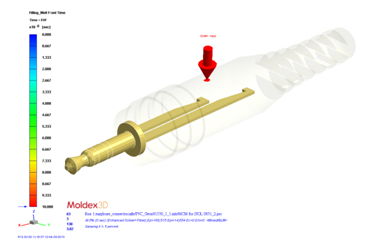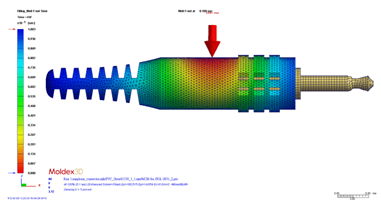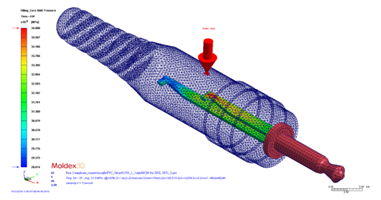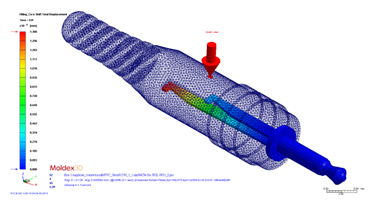Over the past decade, the metal-insert injection molding has been widely used in all kinds of plastic products, such as 3C communication equipments, computer related products, automobiles and motorcycle components, IC chips, medical devices, daily use products, etc. Due to the growing demand for thinner and lighter 3C products, the use of insert injection molding is constantly increasing in order to address the difficulties in design and molding process in recent years. Through insert injection molding, the overall product strength of the original design can not only be maintained but also greatly enhanced.
The advantages of the insert injection molding process are as follows:
- The combination of the properties of plastic and metal can enhance the functionality and feature of the part as well as reduce the product volume.
- Most of the small, precise and complex parts which are difficult to assemble can be embedded directly into mold cavity and proceeded with plastic injection molding without secondary process, which can significantly improve the production efficiency.
- The integration of plastic and metal for insert molding can enhance the overall mechanical strength and improve assembly production, automation and reliability.
The disadvantages of the insert injection molding are as follows:
- When the molten plastic flow into the mold cavity, the flow of molten plastic will pressure the part insert and the uneven pressure distribution would cause deformation of the insert.
- The inserts with larger geometric dimension are easier to have stress concentration phenomenon.
- In the case of combination of two or more different materials, it usually has the risk of deformation or damage due to the differences of thermal expansion coefficients.
Based on the challenges listed above, it is difficult for product designers and mold developers to observe the deformation of the part inserts in the molding process without the appropriate analytical tools. Nowadays, we can utilize the Moldex3D advanced forecast techniques to find out the stress and displacement distributions of part inserts in filling process through coupling calculation of the insert parts and melt flow. Furthermore, product designers and mold developers can optimize the design via visualizing the part inserts displacement results.
Moldex3D has demonstrated accurate simulation analysis capabilities in multi-material and insert injection molding in the past. The new version, Moldex3D R12, provides a two-way FSI (fluid-structure coupling) algorithm technical application, and the feature of FSI algorithm is that the mesh of the products and part inserts will be synchronized deformation with the melting flow. The result is able to accurately show the part insert deformation in different filling percentage of the cavity. Before calculation process, the filling percentage of cavity is used to set the FSI exchanging frequency of melt and insert part.
The features of the insert molding process evaluation program are as follows:
- Support plastic parts and metal inserts.
- Evaluate melt flow around the part insert
- Evaluate flow pressure, stress distribution and displacement around the part insert
- Predict thermal degradation problem of plastic part and part insert caused by hot melt flow reheating
- Evaluate the effect of the part insert in cooling stage
- Predict temperature variation of the part insert during the molding process
- Evaluate the interaction effect between the part insert and warped part
- Evaluate the final part shape
In the case of microphone audio cable, Figure 1 is a metal connector design in the cavity
 Fig. 1 The metal insert and the plastic part
Fig. 1 The metal insert and the plastic part
The Figure 2 is the melt-front result calculated via a multi-component injection molding with two-way fluid-structure coupling method. The result shows the displacement of the metal insert during the filling process.
 Fig. 2 The melt front result
Fig. 2 The melt front result
Figure 3 is the result of the metal insert pressured at the end of filling stage. Users can evaluate the influence on the part insert from the melt based on the pressure result.
 Fig. 3 The pressure result of the insert
Fig. 3 The pressure result of the insert
Figure 4 shows the displacement of the metal insert at the end of the filling stage. Users can evaluate if the displacement amount of the part inserts is acceptable without influencing product functionality and strength.
 Fig. 4 The insert deformation
Fig. 4 The insert deformation
Moldex3D provides the latest multi-component and insert injection molding prediction technologies. Users can predict the effectiveness of the core shift by fluid-structure coupling analysis. This method is to help predict potential molding problems before mold manufacturing and assist product designers and mold developers to control product quality more precisely. To learn more about the new features and applications for insert injection molding process, please visit www.moldex3d.com or contact us at mail@moldex3d.com.